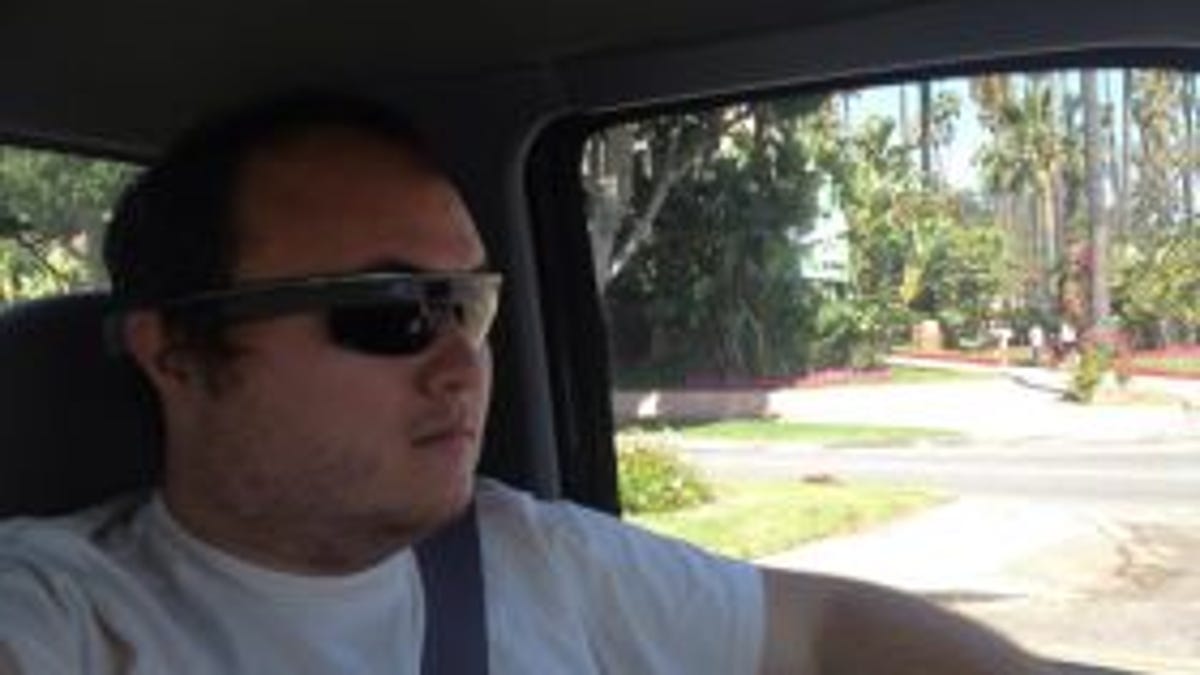The truth about driving under the influence of Google Glass
CNET contributor Ben Parr argues that using Google Glass shouldn't be banned from our highways.

I drove from Los Angeles to San Francisco while wearing Google Glass, and I did not get into an accident.
That's the first thing you should know about using Glass while driving. The second thing you should know is this: It's absolutely safer driving with Glass than picking up your phone and looking down -- something that we know we're not supposed to do, but the vast majority of us do anyway.
The Verge wrote a brief review of using Glass while driving, but it wasn't a sufficiently long or thorough test, in my opinion. So I decided to drive under the influence of Glass across Los Angeles for a weekend and wear it on my return trip to San Francisco.
Glass isn't a device that keeps interrupting your day. When you get notifications, it plays a distinctive tone, but you have to either touch your Glass or tilt your head up and down to view the notification. While I was driving, I tried not to look at these notifications until I was parked at a stoplight (though sometimes curiosity got the best of me). You absolutely need to adjust the head-tilt settings so you don't keep activating Glass whenever you hit a bump. (Mine is set for 21 degrees.)
While bright sunlight can make it hard to view your Glass screen, the sunglasses extension is very useful at countering this effect. Unlike The Verge's Sean Hollister, I had no problem discerning the majority of the Glass notifications in the bright sun of L.A. (Path posts were hard to read, though.) The bone conduction speaker has trouble getting over the sounds of traffic and engines, but I could make out the majority of what Glass read to me.
Most of my interactions with Glass while on the road came in the form of voice commands. Taking photos was simple, though you can only really take pictures of the road, and making phone calls was a snap. I didn't live-stream any part of my drive, but I suspect that would be distracting and entirely not recommended.
Navigation worked well, whenever the GPS was active. Having a map float around in your upper vision does feel like living in the future. I relied on the speaker more than the screen, though. The map was simply a distraction. Navigation on Glass is a useful feature that's still clearly in beta. I wouldn't recommend looking at the navigation screen while making turns in a city or in traffic.
Which brings me to the crux of the argument against Glass while driving -- the screen does, in fact, take your eyes off the road, which is absolutely dangerous. Anything that takes your eyes off the road is dangerous, though. This includes your friend in the passenger seat and especially your smartphone.
Does this mean Glass should be banned from the road? I don't think so, because the alternative --- looking down to check your phone or send a text -- is far more dangerous. You don't have to look away from the road to send a text from Glass -- everything is done via voice dictation. The same is true of phone calls, emails, and even Google searches.
I rarely looked up during my six-hour trip from L.A. to S.F. It wasn't a constant distraction on the road. It actually makes for a decent hands-free voice device. I didn't have to touch my phone at all while I was driving, and that is a good thing.
Is driving under the influence of Glass dangerous? Not if it's used responsibly. But like any other gadget, people will abuse it. Still, it's a far better alternative to picking up your smartphone. Politicians should compare using Glass versus using a smartphone on the road before prematurely banning the device on our highways.

